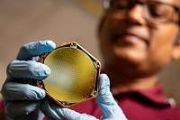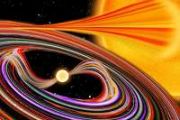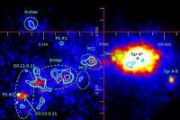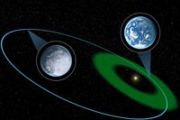
Copernical Team
Video: Euclid completes thermal vacuum testing
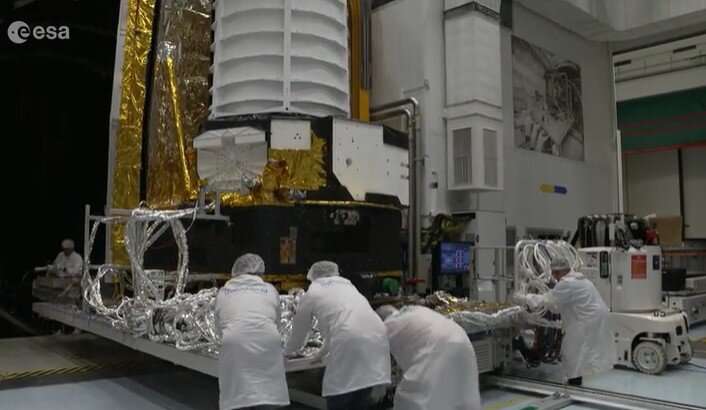
At the Thales Alenia Space test facility in Cannes, France, the massive door of the thermal vacuum chamber was opened after a month of rigorous testing of ESA's Euclid mission to explore the dark universe.
In Cannes, the fully integrated spacecraft was subjected to the conditions of space and its subsystems were fully tested for the first time. With the Euclid space telescope, scientists hope to learn more about dark matter and dark energy which could make up more than 95% of our universe.
The film includes soundbites from ESA Euclid Mission and Payload Manager: Alexander Short and ESA Euclid VIS-Instrument Engineer: Magdalena Szafraniec.
Provided by European Space Agency
Week in images: 07-11 November 2022

Week in images: 07-11 November 2022
Discover our week through the lens
Arralis to launch new beam steering antenna
 Arralis is pleased to announce the launch of our new Ka-band Phased Array Beam Steering Antenna at Space Tech Expo Europe.
Our low profile, active Phased Array Beam Steering Antenna has many vital applications for providing satellite communications on the move for aviation and ground communications in remote areas.
b>Key benefits of Arralis Ka-band Beam Steering Antenna br> /b>
The
Arralis is pleased to announce the launch of our new Ka-band Phased Array Beam Steering Antenna at Space Tech Expo Europe.
Our low profile, active Phased Array Beam Steering Antenna has many vital applications for providing satellite communications on the move for aviation and ground communications in remote areas.
b>Key benefits of Arralis Ka-band Beam Steering Antenna br> /b>
The D-Orbit signs Framework Agreement with NPC Spacemind
 The space transportation and logistics company D-Orbit has announced the signing of a framework contract with NPC SPACEMIND, an Italian space company specializing in smaller satellite hardware, complete platforms, and end-to-end mission services.
The contract covers the launch and deployment of FUTURA-SM1 and FUTURA-SM3, a 3U and a 6U CubeSats respectively, which will be integrated into NP
The space transportation and logistics company D-Orbit has announced the signing of a framework contract with NPC SPACEMIND, an Italian space company specializing in smaller satellite hardware, complete platforms, and end-to-end mission services.
The contract covers the launch and deployment of FUTURA-SM1 and FUTURA-SM3, a 3U and a 6U CubeSats respectively, which will be integrated into NP WA researchers lead the way in hi-tech communications
 The researchers, from the International Centre for Radio Astronomy Research (ICRAR), have been working on this project for two years, with their findings published in the internationally respected science journal, Nature Scientific Reports.
Although optical communications have been in use since the 1980's, government and industry have continued to rely on radio transmission technology in s
The researchers, from the International Centre for Radio Astronomy Research (ICRAR), have been working on this project for two years, with their findings published in the internationally respected science journal, Nature Scientific Reports.
Although optical communications have been in use since the 1980's, government and industry have continued to rely on radio transmission technology in s Viasat and Cobham Satcom announce strategic collaboration on maritime connectivity system
 Viasat Inc. (NASDAQ: VSAT) and Cobham Satcom have announced that the companies are collaborating on a new, advanced satellite connectivity solution for the maritime and energy industries in preparation for the launch of Viasat's next generation satellite constellation, ViaSat-3.
The connectivity system, which will include a portfolio of groundbreaking antenna systems from Cobham Satcom, is
Viasat Inc. (NASDAQ: VSAT) and Cobham Satcom have announced that the companies are collaborating on a new, advanced satellite connectivity solution for the maritime and energy industries in preparation for the launch of Viasat's next generation satellite constellation, ViaSat-3.
The connectivity system, which will include a portfolio of groundbreaking antenna systems from Cobham Satcom, is BeiDou making mark among navigation systems
 China's BeiDou Navigation Satellite System (BDS) will be further developed and feature better compatibility and interoperability coordination with the world's other navigation systems, including the GPS system of the United States, Russia's GLONASS system and the Galileo system of the European Union, an official said during the World Internet Conference Wuzhen Summit in Zhejiang province on Wedn
China's BeiDou Navigation Satellite System (BDS) will be further developed and feature better compatibility and interoperability coordination with the world's other navigation systems, including the GPS system of the United States, Russia's GLONASS system and the Galileo system of the European Union, an official said during the World Internet Conference Wuzhen Summit in Zhejiang province on Wedn Ultrathin solar cells promise improved satellite performance
 Most space satellites are powered by photovoltaic cells that convert sunlight to electricity. Exposure to certain types of radiation present in orbit can damage the devices, degrading their performance and limiting their lifetime.
In Journal of Applied Physics, by AIP Publishing, scientists from the University of Cambridge proposed a radiation-tolerant photovoltaic cell design that feature
Most space satellites are powered by photovoltaic cells that convert sunlight to electricity. Exposure to certain types of radiation present in orbit can damage the devices, degrading their performance and limiting their lifetime.
In Journal of Applied Physics, by AIP Publishing, scientists from the University of Cambridge proposed a radiation-tolerant photovoltaic cell design that feature Piece of Challenger space shuttle found off Florida coast
 Divers searching for a World War II-era aircraft near the Bermuda Triangle have found a piece of an entirely different sort of vessel: part of the US Challenger space shuttle that exploded soon after takeoff in 1986.
The shuttle burst apart just dozens of seconds after launching from Florida, killing seven crew members, including the teacher Christa McAuliffe who had won a national screening
Divers searching for a World War II-era aircraft near the Bermuda Triangle have found a piece of an entirely different sort of vessel: part of the US Challenger space shuttle that exploded soon after takeoff in 1986.
The shuttle burst apart just dozens of seconds after launching from Florida, killing seven crew members, including the teacher Christa McAuliffe who had won a national screening NOAA satellite, NASA LOFTID heat shield experiment launched into orbit
 The third of five advanced NOAA satellites launched into orbit early Thursday from California's Vandenberg Space Force Base. The Joint Polar Satellite System-2 will provide a continuous stream of vital weather data.
"The need for advanced satellites, such as JPSS-2, to accurately predict weather and climate has never been greater," said Michael C. Morgan, assistant secretary of commerce
The third of five advanced NOAA satellites launched into orbit early Thursday from California's Vandenberg Space Force Base. The Joint Polar Satellite System-2 will provide a continuous stream of vital weather data.
"The need for advanced satellites, such as JPSS-2, to accurately predict weather and climate has never been greater," said Michael C. Morgan, assistant secretary of commerce 
















